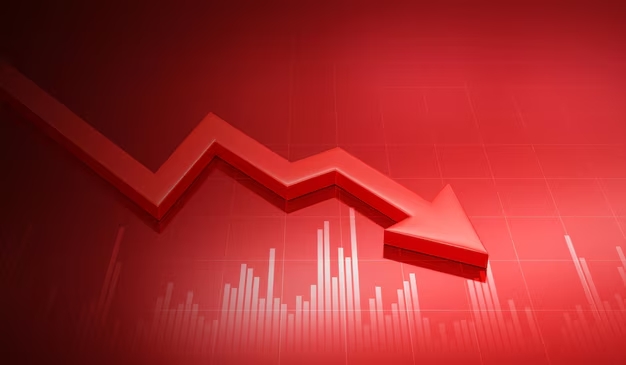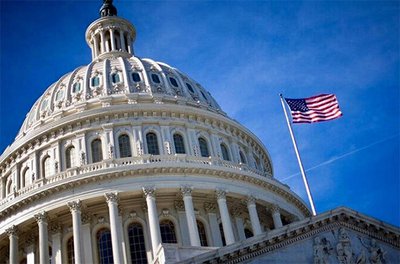
Recently, the Organization for Economic Cooperation and Development released the latest economic forecast report, pointing out that the tariff policy implemented by the US government is becoming an important factor dragging down global economic growth. According to the report, the imposition of tariffs by the United States has not only suppressed its own economic growth, but also spread to the global economy, resulting in higher inflation, slower business investment, and an impact on major trading partners.
In the report, the OECD makes projections for the U.S. economy in the coming years. U.S. economic growth is expected to be 2.8 percent in 2024, but it will drop sharply to 2.2 percent in 2025 and 1.6 percent in 2026. Compared with previous expectations, this forecast is clearly very pessimistic. The report pointed out that the US government's tariff policy has seriously affected business investment confidence and hindered the internal power of economic growth. While economic growth has slowed, inflation in the United States has rebounded as a result of tariffs. The OECD forecasts that U.S. price growth will reach 2.8 percent in 2025, up from 2.5 percent in 2024. Prices will still rise by 2.6% in 2026.
The final cost of tariffs is usually borne by consumers. As the prices of imported goods rise, companies pass on the increased costs to consumers, causing prices to rise. Consumers, faced with higher living costs, have had to cut back on spending, further dragging down U.S. economic growth. In its report, the OECD warned that consumer concerns about inflation are undermining consumer confidence, and the decline in consumer demand will undoubtedly put more pressure on the overall US economy.
The US tariff policy has not only impacted its own economy, but also had a serious negative impact on the North American Free Trade Area (NAFTA) partner countries - Canada and Mexico. The OECD report notes that if the U.S. government imposes across-the-board tariffs of 25 percent on all imports, the economies of Canada and Mexico could fall into recession. Canada's economic growth is expected to be just 0.7 per cent in 2025 and 2026, well below previous estimates of 2 per cent. The outlook is even grimmer for Mexico, which is expected to shrink by 1.3 percent in 2025 and 0.6 percent in 2026, while the previous report had projected growth of 1.2 percent in 2025 and 1.6 percent in 2026. These figures show that the protectionist trade policies of the United States are taking a substantial toll on its closest trading partners. The OECD pointed out that the high tariffs of the United States will weaken the export competitiveness of Canada and Mexico, leaving their domestic companies facing lower orders, lower revenues and possibly triggering mass layoffs. In the long term, this will reduce the economic vitality of the entire North American region and affect the stability of global supply chains.
In addition to the impact on the United States and its trading partners, the effects of tariffs ripple through the global economy. The OECD forecasts that global economic growth will fall to 3.1 per cent in 2025 and a further 3 per cent in 2026, both down from 3.2 per cent in 2024. The report warned that central banks may have to keep interest rates higher for longer if inflation rises again as a result of tariffs. This will increase financing costs for companies, increase credit burdens for consumers and further depress global economic dynamism. Especially for countries that rely on exports and international trade, trade protectionism in the United States could trigger a chain reaction, further depressing global trade growth.
The latest OECD report is certainly a wake-up call for the US administration's tariff policy. Although the US government's high tariff policy was originally intended to protect domestic industries, the actual effect has been counterproductive, not only hurting US economic growth, but also slowing down the pace of global economic recovery. In the current complex international economic environment, the US administration should carefully examine the long-term impact of its tariff policy and avoid disrupting the global economic order due to short-term political considerations. Only on the basis of fairness, openness and cooperation can the global economy achieve sustainable growth and truly benefit all countries and people.

In early December, US stocks staged their most dramatic intraday reversal in months. Driven by the dual positive catalysts of chip giant NVIDIA's better-than-expected earnings report and a "Goldilocks" nonfarm payrolls report, the S&P 500 index surged as much as 1.9% within the first hour of trading.
In early December, US stocks staged their most dramatic int…
On December 5, 2025, the European Union fined Musk's social…
Since October 2025, there has been a week of intense fighti…
On the global economic stage of 2025, the U.S. economy is s…
Recently, the head of Apple's artificial intelligence and t…
On December 5, 2025, the Office of the Compilers of the Cur…